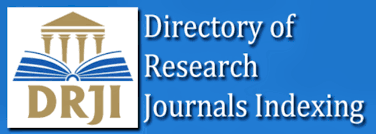Impact of different doses of deltamethrine on soil microbial density and crop growth
DOI:
https://doi.org/10.30574/gscarr.2021.8.3.0175Keywords:
Agrochemicals, Microbial density, Crop yield, DeltamethrineAbstract
The effects of agrochemicals pollution on soil nutrients, soil microbes as well as plants cultivated on the soil were studied. Insecticide and herbicide were used to impact on the soil samples across concentration gradients. Bean and maize seeds were planted in separate experiments to monitor the effects of the agrochemicals on the plants. The microbial diversity and the physicochemical characteristics of the soil before and after pollution were determined using standard methods. Chlorophyll contents of the leaves were also determined after planting. Results indicated that bacterial isolates such as Enterococcus sp 54(40%), Staphylococcus sp 8(13%), Bacillus sp 46(34%) and Micrococcus sp 15(11%) and fungal isolates such as Penicillium sp 41(34%), Saccharomyces sp 67(56%), Yeast sp 4(3%), Geotrichum sp 6 (5%) and Aspergillus sp 1(1.8%) were recovered from treated and untreated soil with the percentages representing after planting. From the results, the herbicide treated soils indicated that the Total Heterotrophic Bacterial Count (THBC) increased after cultivation while the Total Heterotrophic Fungal Count (THFC) decreased after cultivation. On the other hand, the insecticides treated soils recorded a general decrease in THFC and THBC after cultivation. The total nitrogen (TN) and available phosphorus (AP) had no significant differences before and after planting while the exchangeable potassium (EP) had significant increase recorded after planting. Plants generally had poor growth characteristics recorded by stem girth and length, as well as chlorophyll content.
Metrics
References
AL-Ani MAM, Hmosshi RM, Kanaan IA, Thonoon AA. Effect of pesticides on soil microorganisms. Journal of Physics: Conference Series. 2019; 1294(7): 1-8
Arora S, Sahni D. Pesticides on soil microbial ecology and enzyme activity-An Overview. Journal of Applied and Natural Science. 2016; 8(2): 1126-1132.
Bac´maga M, Borowik A, Kucharski J, Tomkiel M, Wyszkowska J. Microbial and enzymatic activity of soil contaminated with a mixture of diflufenican + mesosulfuron-methyl + iodosulfuron-methyl-sodium. Environ. Sci. Pollut. Res. 2015 22: 643 – 656.
Beishir I. Microbiology in Practice. A self-Instruction Laboratory Course. Fourth Edition. Harper and Row Publishers, New York. 1987; 96-111, 120-130, 238-272.
Buchanan RE, Gibbon NE. Bergeys Manual of Determinative Bacteriology. Williams and Wilkens Company, Baltimore, USA. 2000.
Bishnu AK, Chakrabarti A, Chakraborty, T Saha. Pesticide residue level in tea ecosystems of Hill and Dooars regions of West Bengal, India Environ. Monit. Assess. 2009; 149(1-4): 414-457.
Bhandari G. An Overview of Agrochemicals and Their Effects on Environment in Nepal. Applied Ecology and Environmental Sciences. 2014; 2(2): 66-73.
Braide W, Ajugwo GC, Adeleye SA, Ibegbuem CR, Azuike PA. Effects of agrochemicals (insecticides) on microbial population in soil. Ecronicon Microbiology Research Article. 2017; 8(4): 211-221.
Cheesbrough M. District Laboratory Practice in Tropical Countries. Part 2, Cambridge University Press, UK. 2005; 35-38, 62-69.
Chi-Chu L. Effect of pesticides on soil microbial community. Journal of Environmental Science and Health. 2010; 45(5): 348-359.
Das V, Mukherjee D. Influence of inorganic and organic fertilization on soil microbial biomass, metabolic quotient and heavy metal bioavailability. Boil Fert Soils. 2008; 28: 371-376.
Harrigan WF, McCance ME. Laboratory Methods in Food and Dairy Microbiology. Eight Edition, Academic Press Inc., London. 1990; 7-23, 286-303.
Joergenson RG. Microbial biomass. Methods in applied soil microbiology and biochemistry academic press, London. 1995; 382-386.
Kalia A, Gosal SK. Effect of pesticides application on soil microorganisms. Achieves of Agronomy and Soil Science. 2011; 57: 569-596.
Lopez M, Meinken K, Backhaus H. Monitoring impact of a pesticide treatment on bacterial soil communities by metabolic and genetic finger printing in addition to conventional testing procedures. Appl. environs. Microbial. 2002; 64: 284-2821.
Menna RS, Kumar S, Datta R, Ll R, Vijayakumar V, Brtnicky M, Sharma MP, Yadav GS, Jhariya MK, Jagir CK, Pthan SI, Dokulilova T, Pecina V, Marfo TD. Impact of agrochemicals on soil microbiota and management. A Review. Land. 2020; 34(9): 1-21.
Mishra SD, Dwivedi BKN, Prasad D. Effect of Environmental Pollutant on Metabolism of Soil Nematodes. Soil Pollution and Soil Organisms. 2001; 31-44.
Pal R, Chakrabarti A, Chakrabarti K, Chowdhury A. Degradation and effects of pesticides on soil microbiological parameters-A Review. International Journal of Agricultural Research. 2006; 1(3): 240-258.
Paul D, Michael S, Richard H, William T. Microbial aspects of the interaction between soil depth and biodegradation of the Isoproturon. Chemosphere. 2007; 66: 664-671.
Piao SC, LIV GS, Wu Y, Xu WB. Relationships of soil microbial biomass carbon and organic carbon with environmental parameters in montainous soil of Southwest China. Biol. Fertil. Soils. 2001; 33(4): 347-350.
United State Environmental Protection Agency (U.S.E.PA). Spray drift of pesticides. Washington D.C: office of pesticide programs. 1999.
William RM, Dmontet S, Bufo SA, Mazzatura A. Effects of organic amendment and herbicide treatment on soil microbial biomass. Biol. Fer. Soils. 2002; 32: 17-23.
Downloads
Published
How to Cite
Issue
Section
License

This work is licensed under a Creative Commons Attribution-NonCommercial-ShareAlike 4.0 International License.












